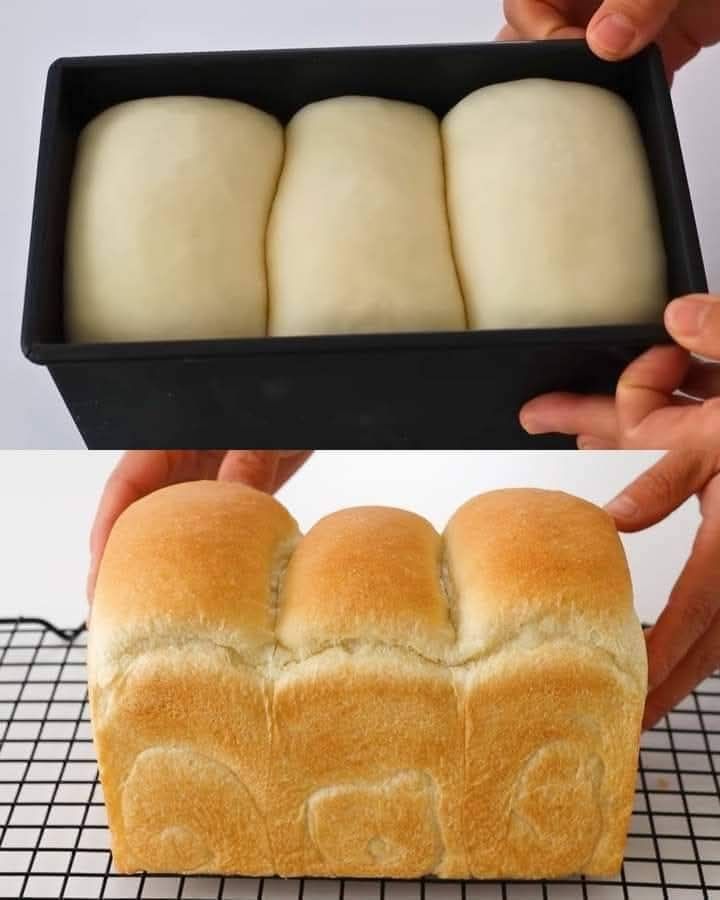ADVERTISEMENT
**The Easiest and Cheapest Bread Recipe: No Kneading, No Eggs, No Butter**
Bread is a staple in many households around the world, enjoyed with a variety of dishes for breakfast, lunch, and dinner. For some, bread making might seem like a complicated task requiring a lot of time, kneading, and ingredients such as eggs and butter. However, making your own bread doesn’t need to be that way. With the right ingredients and a simple, no-knead recipe, you can bake fresh, homemade bread that’s both affordable and delicious, with minimal effort.
In this article, we will explore an incredibly easy bread recipe that requires no kneading, no eggs, and no butter. It’s made with basic ingredients that are likely already in your pantry, and it’s a great solution for those who are looking for a quick, inexpensive way to enjoy freshly baked bread at home.
Let’s dive into the details of this simple recipe, step by step, and understand how you can make this fantastic bread with just five ingredients and minimal effort. Whether you’re new to baking or a seasoned pro looking for a shortcut, this recipe is sure to impress.
### **1. The Key Ingredients: What You Need for This Simple Bread**
To make this no-knead, no-egg, and no-butter bread, you’ll only need five simple ingredients, most of which you probably already have at home. The beauty of this recipe is its simplicity—no special equipment, no complicated steps, and no extra ingredients. Let’s break down each component:
#### **a. Water (200 ml or 0.85 cup)**
Water is an essential ingredient for activating the yeast and hydrating the flour. It’s important that the water is warm but not too hot. Water that’s too hot can kill the yeast, while water that’s too cold will slow down the fermentation process. Ideally, the water should be between **100°F to 110°F (37°C to 43°C)**.
#### **b. Sugar (25g or 2 tbsp)**
Sugar serves two purposes in this recipe. First, it acts as food for the yeast, helping to activate and nourish it. Second, sugar also helps to give the bread a slight sweetness, although it’s not overwhelming. The sugar will be absorbed during the fermentation process, so you won’t taste the sugar in the final product.
#### **c. Yeast (3g or 1 tsp)**
Yeast is the magic ingredient that helps the dough rise. For this recipe, **active dry yeast** works perfectly. There’s no need for any complex mixing or proofing methods; simply adding the yeast to the water and sugar mixture will get it to work. The yeast will cause the dough to rise, giving it that soft, fluffy texture we all love in homemade bread.
#### **d. Bread Flour or Wheat Flour (300g or 2 cups)**
Flour is the backbone of any bread recipe. In this case, **bread flour** is used to give the bread its structure and texture. Bread flour has a higher protein content than all-purpose flour, which helps create a chewier, denser bread. Alternatively, you can use **whole wheat flour** for a more wholesome, nutty flavor. Whole wheat flour can also add extra fiber to the bread, making it a healthier choice.
#### **e. Olive Oil (20g or 2 tbsp)**
Olive oil is used in this recipe to add moisture and flavor to the dough. It also helps to keep the bread soft and prevents it from becoming too dry. Olive oil brings a slight richness to the bread without the need for butter, making this a healthier option. The oil helps the bread maintain its texture, even after baking.
#### **f. Salt (3g or 1/2 tsp)**
Salt is a necessary ingredient in any bread recipe. It not only enhances the flavor of the bread, but it also helps control the fermentation process. Too much salt can slow down yeast activity, while too little salt can result in bland bread. A small amount of salt will ensure your bread has the perfect balance of flavor.
### **2. Why This Bread Recipe Is So Easy**
One of the main attractions of this recipe is its simplicity. Unlike traditional bread recipes that require kneading, proofing, and multiple stages of resting, this recipe is incredibly hands-off and easy to execute. Here’s why:
#### **a. No Kneading Required**
Many bread recipes require you to knead the dough for several minutes to develop the gluten, which gives the bread structure. However, in this recipe, the gluten forms naturally over time with the help of the yeast, meaning you don’t have to spend time manually kneading the dough. This is especially convenient for beginners who may feel intimidated by the idea of kneading bread.
**b. No Eggs or Butter**
Traditional bread recipes often call for eggs and butter to provide flavor, moisture, and structure. However, this recipe skips both ingredients without sacrificing the taste or texture of the bread. Olive oil takes the place of butter, and the bread turns out just as soft, flavorful, and delicious as traditional versions.
For Complete Cooking STEPS Please Head On Over To Next Page Or Open button (>) and don’t forget to SHARE with your Facebook friends
